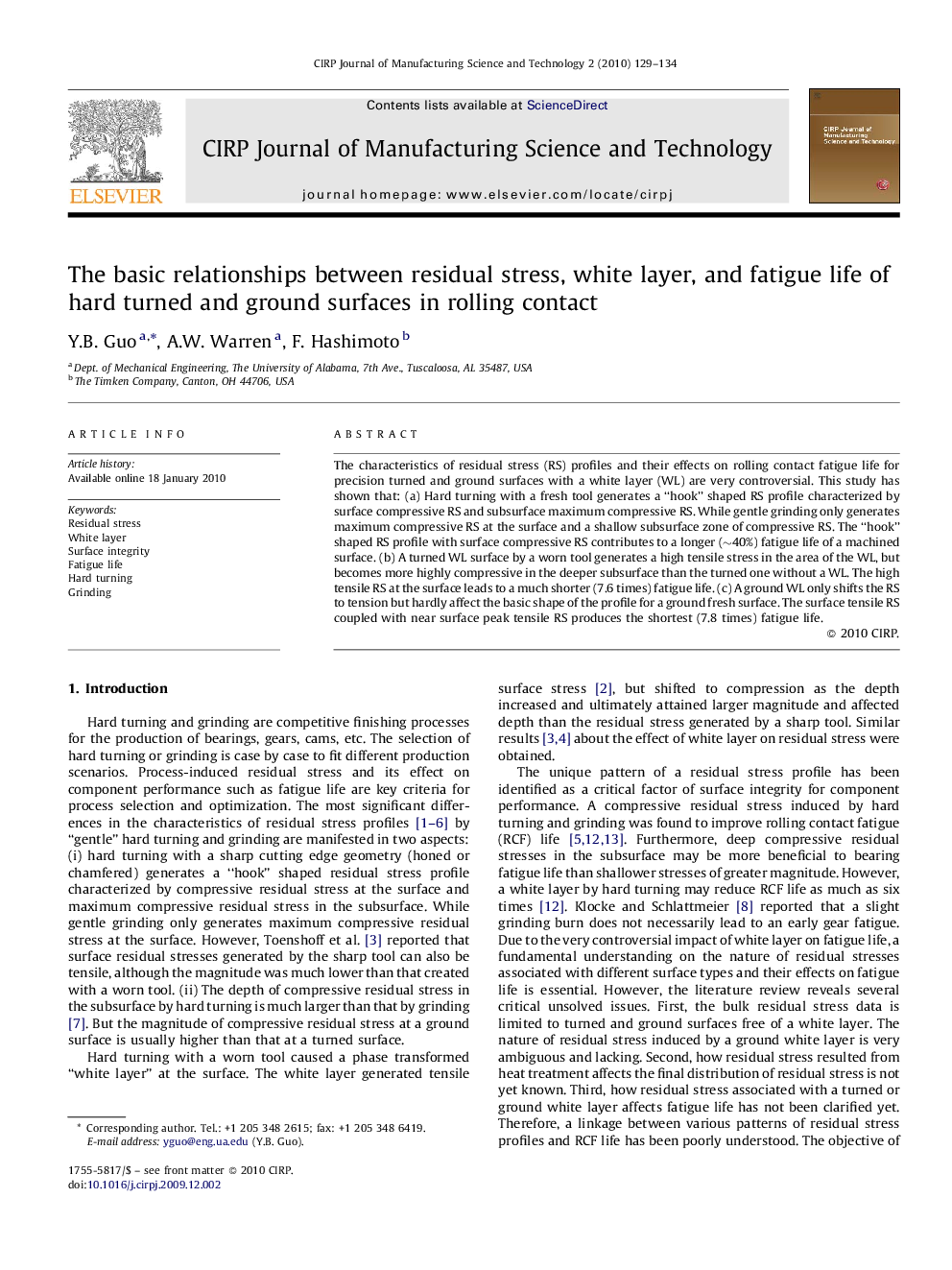| Article ID | Journal | Published Year | Pages | File Type |
|---|---|---|---|---|
| 1679302 | CIRP Journal of Manufacturing Science and Technology | 2010 | 6 Pages |
The characteristics of residual stress (RS) profiles and their effects on rolling contact fatigue life for precision turned and ground surfaces with a white layer (WL) are very controversial. This study has shown that: (a) Hard turning with a fresh tool generates a “hook” shaped RS profile characterized by surface compressive RS and subsurface maximum compressive RS. While gentle grinding only generates maximum compressive RS at the surface and a shallow subsurface zone of compressive RS. The “hook” shaped RS profile with surface compressive RS contributes to a longer (∼40%) fatigue life of a machined surface. (b) A turned WL surface by a worn tool generates a high tensile stress in the area of the WL, but becomes more highly compressive in the deeper subsurface than the turned one without a WL. The high tensile RS at the surface leads to a much shorter (7.6 times) fatigue life. (c) A ground WL only shifts the RS to tension but hardly affect the basic shape of the profile for a ground fresh surface. The surface tensile RS coupled with near surface peak tensile RS produces the shortest (7.8 times) fatigue life.
